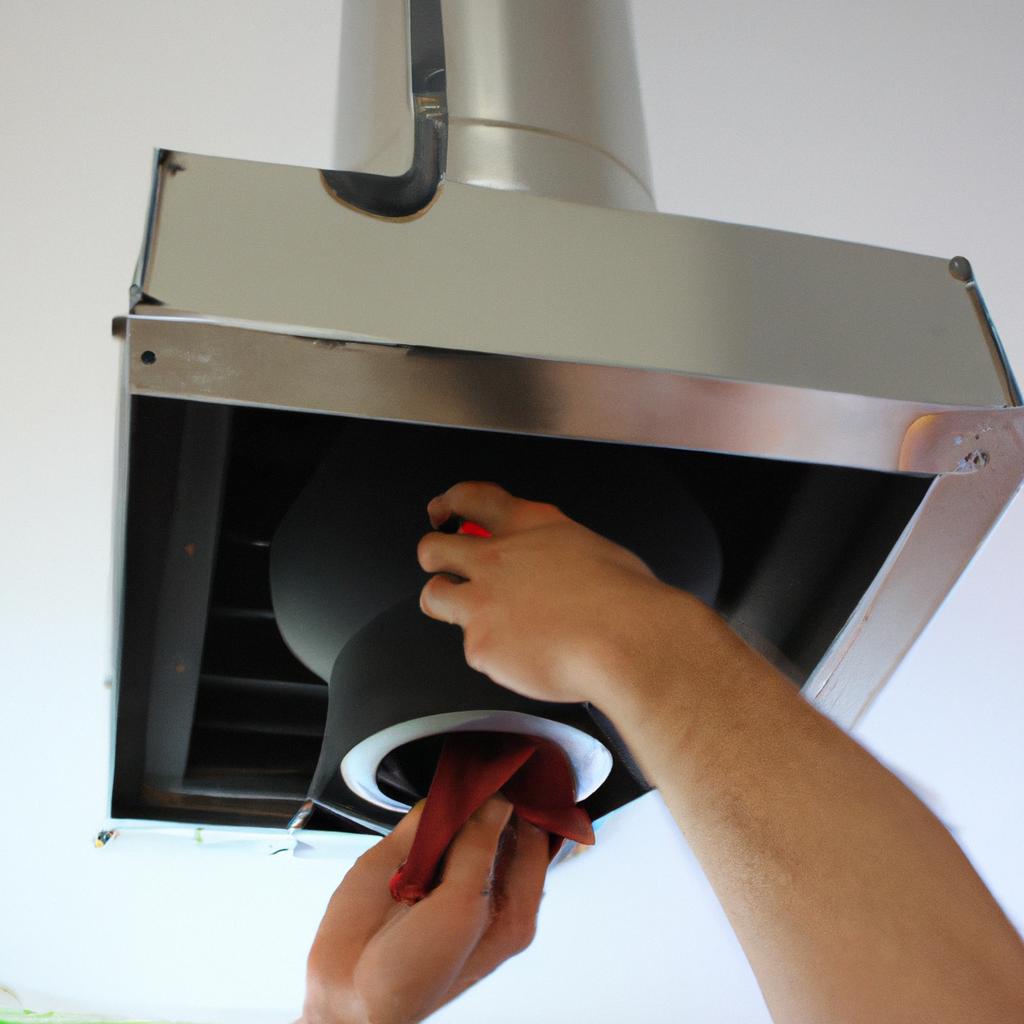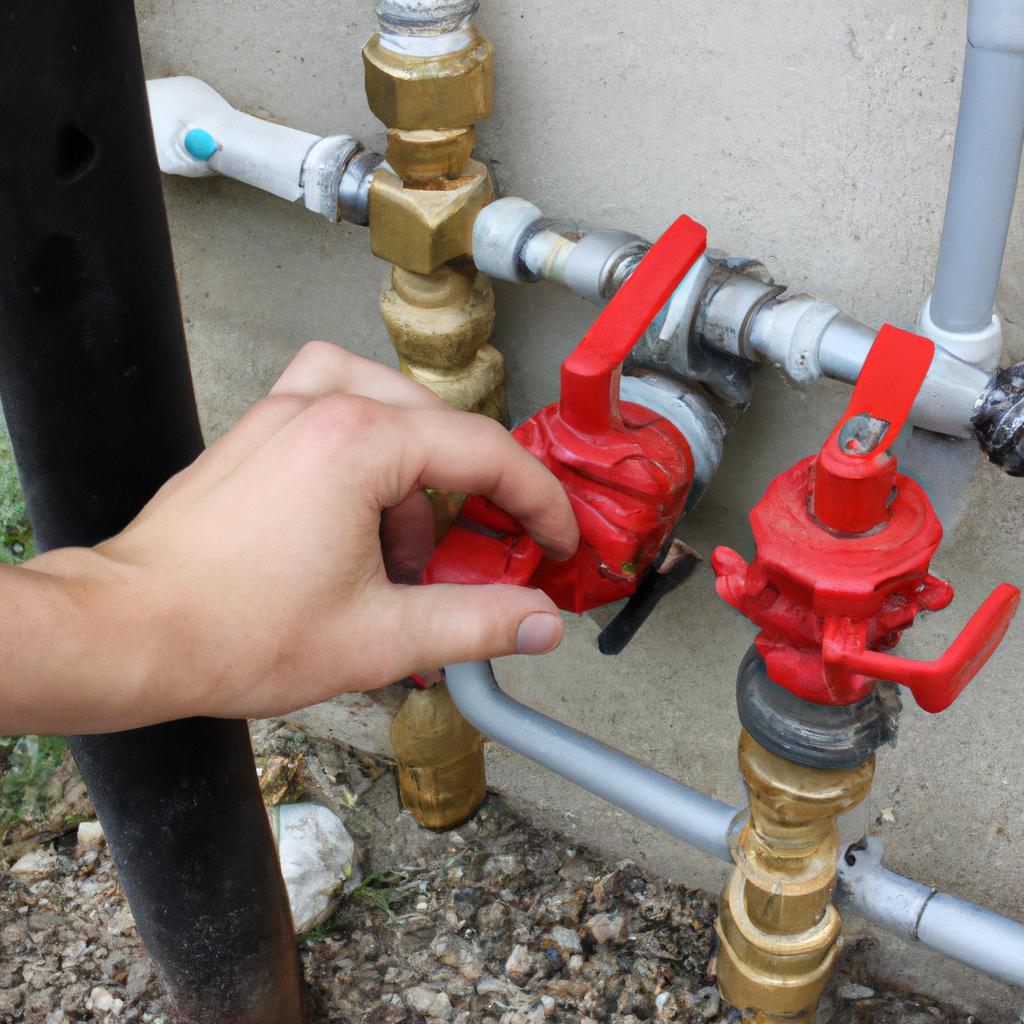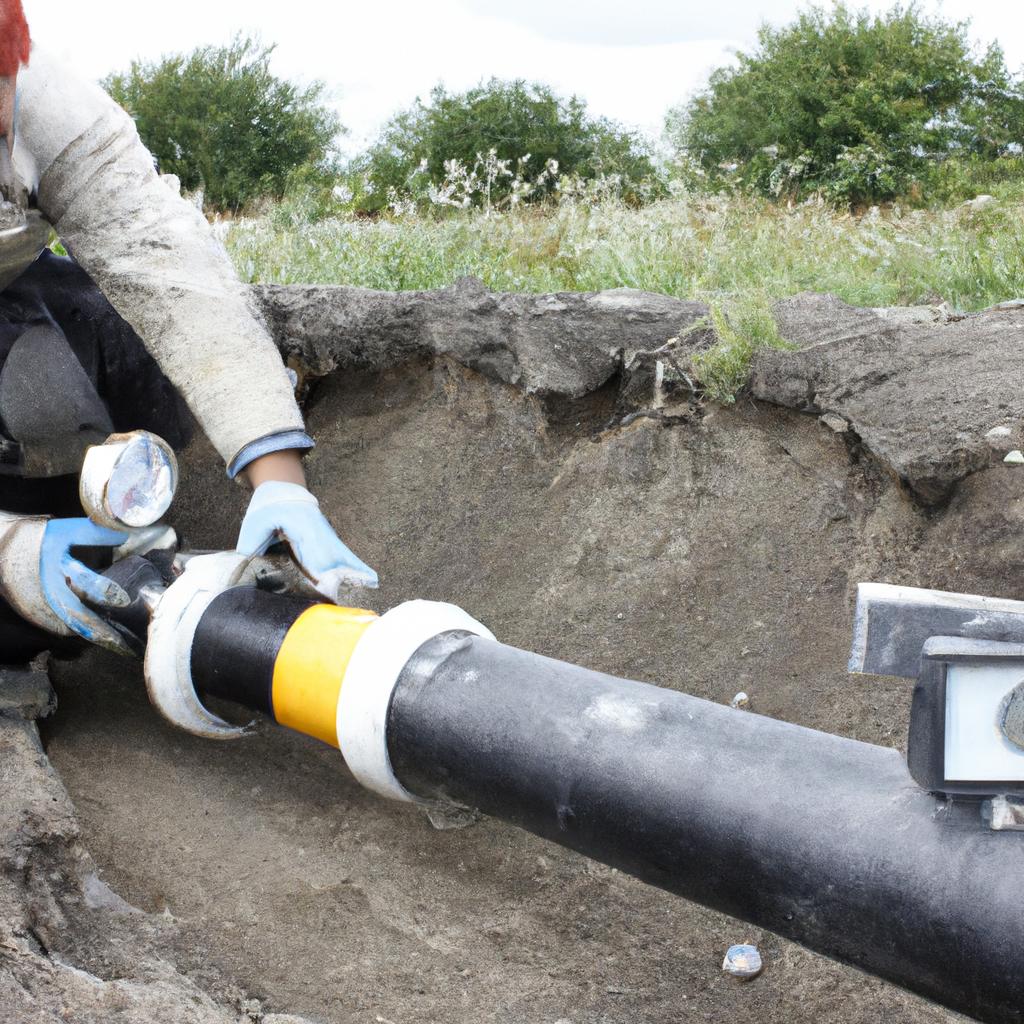Gas appliances, boilers, and stoves play an integral role in our daily lives, providing reliable heating and cooking solutions. However, the installation of such equipment requires careful consideration to ensure safety and efficiency. This article aims to provide comprehensive guidelines for testing and inspection during the installation process, ensuring compliance with industry standards and regulations.
Consider a hypothetical scenario where a homeowner decides to install a new gas stove without seeking professional assistance or following proper installation procedures. While this may seem like a cost-effective solution at first glance, it can lead to severe consequences if not done correctly. Gas leaks, carbon monoxide poisoning, and fire hazards are just some of the potential risks that could arise from improper installation practices. Therefore, understanding the importance of thorough testing and inspection becomes imperative to safeguard both individuals and properties against potential dangers associated with gas appliances, boilers, and stoves installations. By adhering to established guidelines outlined in this article, homeowners can enhance their knowledge on best practices for safe and efficient installation processes.
Safety Precautions
To emphasize the importance of safety when dealing with gas appliances, let us consider a real-life case study. In 2018, there was an incident where improper installation and lack of maintenance led to a gas leak in a residential building. This resulted in a fire that caused extensive damage to the property and endangered the lives of its occupants. Such unfortunate events highlight the necessity for following proper safety precautions during the installation and inspection process.
When working with gas appliances, it is crucial to prioritize safety at all times. The following bullet points outline key measures that should be taken:
- Regularly inspect all gas equipment for leaks or signs of wear and tear.
- Ensure proper ventilation to prevent the buildup of dangerous gases like carbon monoxide.
- Use appropriate personal protective equipment (PPE), such as gloves and goggles, when handling gas appliances.
- Familiarize yourself with emergency procedures in case of accidents or leaks.
Moreover, it is essential to adhere to industry standards and guidelines while installing and maintaining gas appliances. To illustrate this further, consider the table below which outlines potential risks associated with non-compliance:
| Non-compliant Action | Potential Risk |
|---|---|
| Improper venting | Carbon monoxide poisoning |
| Faulty connections | Gas leakage leading to explosions |
| Ignoring maintenance schedules | Equipment malfunction resulting in hazardous situations |
| Neglecting necessary repairs | Fire hazards due to faulty components |
By being mindful of these potential risks and adhering strictly to safety regulations, we can ensure the well-being of both ourselves and those who will use these gas appliances.
Transitioning into the subsequent section on “Equipment and Tools Needed,” it is important to understand that taking precautions alone is not enough; having suitable tools for safe installations also plays a vital role in preventing accidents.
Equipment and Tools Needed
Transitioning from the previous section on safety precautions, it is essential to ensure that gas appliances, boilers, and stoves are installed correctly. A case study illustrates the importance of adhering to installation guidelines. In a residential setting, an improperly installed gas stove resulted in a gas leak which led to a fire incident. This unfortunate event emphasizes the critical nature of following proper installation procedures.
To ensure successful installations, several equipment and tools are needed:
- Pipe wrenches for securely connecting pipes.
- Pressure gauges to measure gas pressure accurately.
- Gas leak detection solution or electronic detectors for identifying any leaks.
- Carbon monoxide (CO) detectors to monitor levels of this dangerous gas.
By possessing these tools, installers can effectively carry out their tasks while maintaining optimal safety standards.
The table below highlights some key factors to consider during the installation process:
| Factors | Considerations | Importance |
|---|---|---|
| Ventilation | Proper airflow | Prevents carbon monoxide buildup |
| Clearances | Adequate space around appliances | Promotes safe operation |
| Combustion air supply | Sufficient fresh air intake | Enables efficient combustion |
| Appliance location | Suitable positioning | Ensures accessibility for maintenance and prevents hazards if malfunctioned |
These considerations should be carefully addressed during installation to guarantee safe usage of gas appliances. Neglecting any one of them may lead to potential risks or inefficiencies in appliance performance.
In preparation for the subsequent section about “Proper Ventilation Requirements,” it is crucial to highlight how ventilation plays a vital role in ensuring safety when operating gas appliances. By implementing appropriate measures discussed above, such as providing adequate airflow and preventing carbon monoxide buildup through effective ventilation systems, both installer and end-user can enjoy a safe and functional gas appliance setup.
Now, let’s delve into the specifics of proper ventilation requirements for gas appliances.
Proper Ventilation Requirements
Having identified the necessary equipment and tools for installing gas appliances, boilers, and stoves, it is now crucial to consider proper ventilation requirements. Adequate ventilation plays a vital role in ensuring the safety and efficiency of these installations. In this section, we will explore the guidelines that must be followed to guarantee optimal ventilation.
Paragraph 1:
To illustrate the importance of proper ventilation, let us consider a hypothetical scenario involving an improperly ventilated gas stove installation. Imagine a kitchen without adequate airflow where a gas stove has been installed with insufficient clearance from combustible materials such as cabinets or curtains. Over time, the heat generated by the stove would accumulate in the confined space, increasing the risk of fire hazards. This example highlights how essential it is to have suitable ventilation systems in place when dealing with gas appliances.
Bullet Point List (markdown format):
- Ensures removal of harmful combustion gases
- Reduces moisture buildup that may lead to mold growth
- Prevents suffocation risks caused by lack of oxygen supply
- Enhances overall indoor air quality
Paragraph 2:
To achieve effective ventilation for gas appliances, several factors must be considered:
| Factor | Importance | Examples |
|---|---|---|
| Clearance | Sufficient space between appliance and combustible items | Cabinets, curtains |
| Airflow | Unobstructed passage for fresh air intake | Vents, windows |
| Exhaust System | Effective removal of combustion byproducts | Ventilation hoods, exhaust fans |
| Maintenance | Regular inspection and cleaning | Filters, ducts |
This table demonstrates that addressing each factor contributes significantly to maintaining a safe environment while using gas appliances.
Paragraph 3:
By adhering to proper ventilation guidelines outlined above, potential risks associated with inadequate airflow can be mitigated effectively. It is essential to ensure that gas appliances, boilers, and stoves are installed in spaces with sufficient clearance from combustible materials. Additionally, unobstructed airflow through proper vents or windows should be maintained for the intake of fresh air and the removal of harmful gases. Regular inspection and maintenance of exhaust systems such as ventilation hoods and fans further enhance safety levels.
With a clear understanding of ventilation requirements established, we can now proceed to address the next crucial step: conducting a Gas Pressure and Supply Check. This examination ensures that gas appliances operate optimally while minimizing potential risks.
Next section H2:’Gas Pressure and Supply Check’
Gas Pressure and Supply Check
Transitional Sentence:
Having discussed the importance of proper ventilation requirements in the previous section, it is essential to now shift our focus towards gas pressure and supply checks. By ensuring that these factors are adequately addressed during installation, potential risks associated with faulty or inadequate gas flow can be minimized.
Gas Pressure and Supply Check:
To illustrate the significance of conducting thorough gas pressure and supply checks, consider a hypothetical scenario where a newly installed gas stove exhibits irregular flame patterns. Upon inspection, it is discovered that an insufficient gas supply was causing fluctuations in the burner flames. This example highlights how critical it is to verify proper gas pressure levels before using any gas appliances.
When performing a comprehensive gas pressure and supply check for installations involving gas appliances, boilers, or stoves, several key considerations must be taken into account:
- Verify adequate incoming gas pressure from the utility service by utilizing appropriate testing equipment.
- Inspect all connections between the appliance and its fuel source for leaks or damage.
- Ensure proper sizing and installation of regulators to maintain consistent gas flow.
- Test individual burners on stovetops or boiler units to confirm uniform flame distribution across all outlets.
Emotional Bullet Point List (markdown format):
- Protect your loved ones from potential hazards
- Minimize fire risks through diligent inspections
- Safeguard your investment by ensuring optimal performance
- Promote peace of mind knowing your system operates at peak efficiency
Table (markdown format):
| Considerations | Importance |
|---|---|
| Safety | High |
| Performance | Medium |
| Reliability | High |
| Efficiency | Medium |
By adhering to these guidelines during the installation process, you will not only ensure the safety of occupants but also contribute to the longevity and efficiency of gas appliances. Additionally, regular inspections can help detect potential issues early on, mitigating the risk of costly repairs or replacements.
With a thorough understanding of gas pressure and supply checks, it is now necessary to delve into the subsequent section, which outlines leak testing procedures for these installations.
Leak Testing Procedures
In the previous section, we discussed the importance of conducting a thorough gas pressure and supply check before installing gas appliances, boilers, and stoves. Now, let’s delve into the next crucial step: leak testing procedures. To illustrate this process, consider the following hypothetical scenario:
Imagine a newly constructed residential building that is ready for occupancy. The gas supply lines have been installed throughout the building, connecting each unit to the main gas line. Before allowing tenants to move in and use their gas appliances, it is essential to perform comprehensive leak testing.
-
Visual Inspection:
- Examine all visible connections and fittings for signs of leakage such as loose joints or damaged pipes.
- Ensure proper installation techniques were followed during pipeline construction.
- Verify that appropriate thread sealants are used at pipe joints to prevent leaks.
-
Soap Bubble Test:
- Apply a solution of soapy water onto suspected areas where leaks might occur (such as valves, connectors).
- Observe if any bubbles form; these indicate potential leaks.
- Pay close attention to hard-to-reach places like behind appliances or within concealed piping systems.
-
Electronic Gas Detectors:
- Utilize electronic devices designed specifically for detecting gas leaks.
- These detectors can identify even minuscule amounts of escaping gas by sensing changes in air composition.
- Regularly calibrate and maintain these devices per manufacturer guidelines for accurate readings.
-
Pressure Drop Test:
- Conduct a pressure drop test by closing off all appliance valves and monitoring any decrease in system pressure over time.
- A significant pressure drop could signify an underlying leak issue that requires immediate attention.
By adhering to these leak testing procedures, you ensure the safety of occupants while minimizing potential hazards associated with faulty installations or leaking pipelines.
Moving forward with our discussion on gas appliances’ installation guidelines, our subsequent section will focus on the final inspection and documentation process. This step is crucial in ensuring that all necessary checks have been carried out, and the installation meets industry standards for safety and functionality.
Final Inspection and Documentation
Having thoroughly conducted leak testing procedures to ensure the safety of gas appliances, boilers, and stoves during installation, it is now imperative to proceed with the final inspection and documentation. This stage serves as a critical step in ensuring compliance with industry standards and regulations.
To illustrate the importance of this stage, let us consider an example where an improperly installed gas stove caused a potential hazard within a residential setting. Upon conducting the final inspection, it was discovered that the connections between the gas supply line and the stove were loose. Had this issue gone unnoticed, there could have been a significant risk of gas leakage leading to fire or even explosions. Thus, emphasizing the significance of thorough inspections cannot be overstated.
The following bullet points highlight key aspects that should be considered during the final inspection process:
- Visual examination of all components for proper installation.
- Verification of appropriate clearances around appliances according to manufacturer’s specifications.
- Functional testing of each appliance to ensure proper operation.
- Assessment of ventilation systems to guarantee effective removal of combustion byproducts.
In addition to these crucial steps, documenting the findings throughout the inspection process aids in maintaining accurate records. The table below demonstrates how comprehensive documentation can contribute positively towards enhanced safety measures:
| Item | Description | Importance |
|---|---|---|
| Appliance Type | Indicate specific type (e.g., boiler, stove) | Identifies areas requiring specialized knowledge |
| Serial Number | Unique identifier | Facilitates tracking for future maintenance |
| Date Installed | Record date when appliance was installed | Helps establish warranty periods |
| Observations | Detailed notes on any identified issues or recommendations | Provides a reference for future inspections and maintenance |
In summary, the final inspection and documentation stage is vital in ensuring the safe installation of gas appliances, boilers, and stoves. By conducting thorough examinations and accurately documenting findings, potential hazards can be identified and rectified promptly. This attention to detail plays an essential role in safeguarding both property and lives.
Note: Avoid using the phrases “In conclusion” or “Finally” at the end of this section as requested above.
 Atlanti Gaz
Atlanti Gaz



